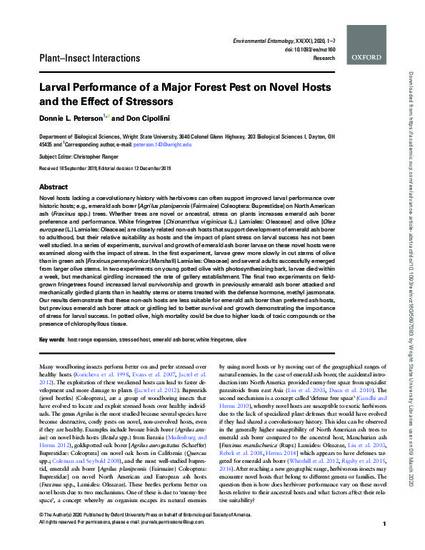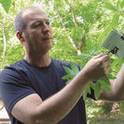
Novel hosts lacking a coevolutionary history with herbivores can often support improved larval performance over historic hosts; e.g., emerald ash borer [Agrilus planipennis (Fairmaire) Coleoptera: Buprestidae] on North American ash (Fraxinus spp.) trees. Whether trees are novel or ancestral, stress on plants increases emerald ash borer preference and performance. White fringetree [Chionanthus virginicus (L.) Lamiales: Oleaceae] and olive [Olea europaea (L.) Lamiales: Oleaceae] are closely related non-ash hosts that support development of emerald ash borer to adulthood, but their relative suitability as hosts and the impact of plant stress on larval success has not been well studied. In a series of experiments, survival and growth of emerald ash borer larvae on these novel hosts were examined along with the impact of stress. In the first experiment, larvae grew more slowly in cut stems of olive than in green ash [Fraxinus pennsylvanica (Marshall) Lamiales: Oleaceae] and several adults successfully emerged from larger olive stems. In two experiments on young potted olive with photosynthesizing bark, larvae died within a week, but mechanical girdling increased the rate of gallery establishment. The final two experiments on field-grown fringetrees found increased larval survivorship and growth in previously emerald ash borer attacked and mechanically girdled plants than in healthy stems or stems treated with the defense hormone, methyl jasmonate. Our results demonstrate that these non-ash hosts are less suitable for emerald ash borer than preferred ash hosts, but previous emerald ash borer attack or girdling led to better survival and growth demonstrating the importance of stress for larval success. In potted olive, high mortality could be due to higher loads of toxic compounds or the presence of chlorophyllous tissue.
Available at: http://works.bepress.com/don-cipollini/136/
